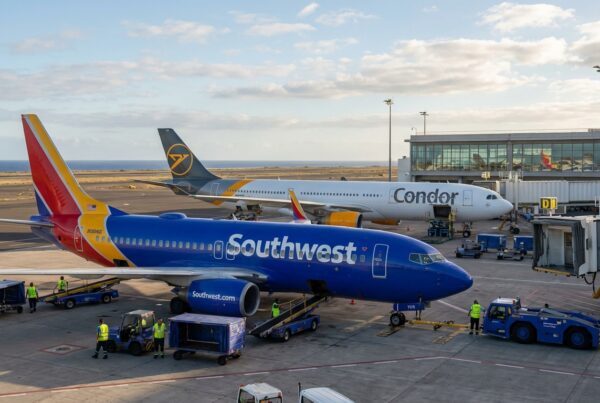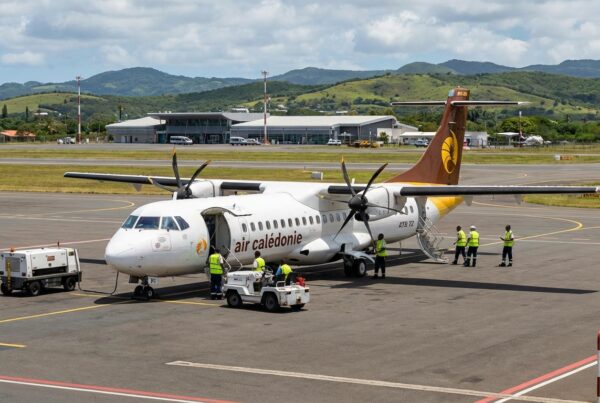Visit FAA is preparing for a major wave of departures in the coming months. A number of experienced employees are considering leaving the company, due to the current economic climate marked by the aging and changes in career paths. This situation could lead to a temporary imbalance in the air traffic controlThis requires the implementation of appropriate strategies to ensure continuity of operations. Organizational challenges call for succession planning and targeted training to overcome long-term skills shortages.
Recent announcements indicate that a wave of departures could soon shake up the FAA's internal structure. This upheaval, anticipated by many industry experts, calls into question the continuity of operations and medium-term recruitment strategy. The mass retirement or voluntary departure of experienced managers seems to be part of a dynamic of profound transformation.
The reasons behind these departures
Several factors explain this mass departure. On the one hand, the pressure induced by the rapid evolution of technologies and the need to modernize infrastructures has led to burnout among certain agents. On the other hand, budgetary constraints and an increasingly competitive working environment have encouraged early departures. These conditions have created a climate of change that differs from previous transition periods in the aviation industry.
Operational impacts and sector concerns
The rapid disappearance of a large number of experienced members could have a considerable impact on the quality of services offered by the FAA. The disruption could even be felt in the airport operationsThis affects processing times and the management of unforeseen incidents. This situation also provides an opportunity to rethink internal recruitment and training mechanisms.
The impact on the aviation community
Beyond the internal issues at stake, this wave of departures raises questions about the future of civil aviation. Professionals in the sector are now being called upon to innovate and rethink procedures in order to compensate for the temporary lack of key skills. On a broader level, these changes are taking place against a backdrop of global developments that are strongly influencing air transport policies, notably in relation to resumption of international connections and reinforced security measures.
Revisiting subscription and communication systems
At the same time, the rise of digital tools is helping to rethink the way in which information and new thinking about these departures are disseminated. Subscribers benefit from smooth navigation on dedicated platforms, without advertising banners, making it easier for them to access detailed analyses and instant comments. What's more, a reserved pseudonym guarantees the veracity of testimonials and exchanges on these sensitive subjects.
Interconnection with other aviation issues
The turmoil within the FAA takes place against a backdrop of ever-changing aviation news. For example, the expansion of the network of destinations by certain carriers, as illustrated by the announcement of a new destination in CaliforniaThis is in line with concerns about our ability to adapt to mass departures. What's more, restrictions on in-cabin liquid containers illustrate the attention paid to safety details, in parallel with these internal reorganizations.
Anticipating change on an international scale
As the FAA prepares for this transition phase, other players in the aviation sector are facing their own challenges. Strikes, such as the one that led to the suspension of all flights in Belgium, demonstrate that organizational turbulence is not isolated to the United States. Professionals are therefore invited to follow the evolution of these events to better anticipate the impact on the industry as a whole, including the recent announcements on the flights suspended in Belgium.
New prospects for skills renewal
This transition period, while critical, offers the opportunity to introduce new recruits and innovative approaches to risk management and operations. Other news, such as the deployment of new delay prevention strategies, is helping to boost passenger confidence and redefine the sector's competitiveness. These reforms, accompanied by instant feedback systems for subscribers, enable more transparent and effective communication.
Against a backdrop of global change, the FAA is likely to review its protocols and management methods to adapt to the new imperatives of the aeronautical world. Recent announcements have prompted in-depth reflection on the sustainability of internal processes, as part of a worldwide trend towards fundamental reform. To keep abreast of these developments, regular updates are available on various specialized platforms, including information on airport disruptions.

Perspectives on wave of departures within the FAA
| Aspect | Observation |
|---|---|
| Talent management | A major resignation of experienced profiles highlights the need to review our recruitment strategy. |
| Skills transfer | Mass departures accentuate the need for mentoring programs to preserve in-house know-how. |
| Operational safety | Reducing the number of experienced employees can have an impact on the quality and safety of operations. |
| Market reaction | Accelerated, targeted recruitment is crucial to filling vacancies quickly. |
| Strategic planning | Succession plans need to be reworked to anticipate the consequences of these departures. |
| Impact on innovation | The need to integrate new perspectives could stimulate the adoption of innovative solutions. |
| In-house training | Investment in training programs becomes a priority to ensure continuity of skills. |
| Administrative reorganization | Teams need to rethink their organization to maintain operational efficiency. |
| Organizational stress | The remaining workforce is at risk of overload, requiring a better distribution of tasks. |
| Corporate reputation | The ability to manage this transition will influence the image of the FAA with its partners. |




